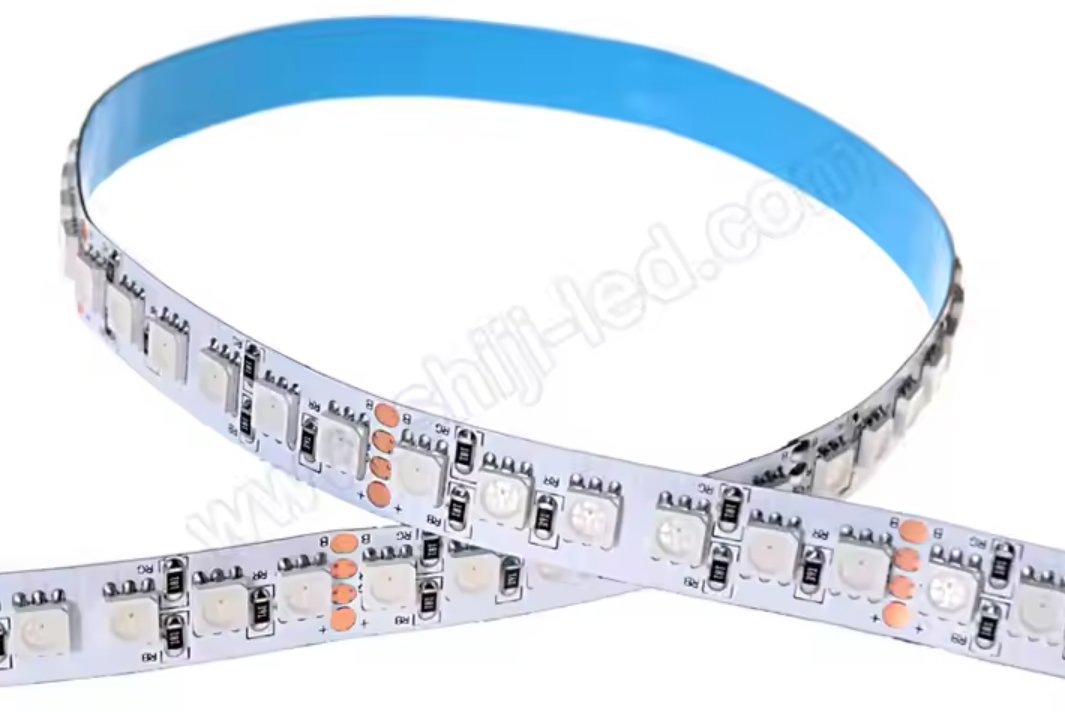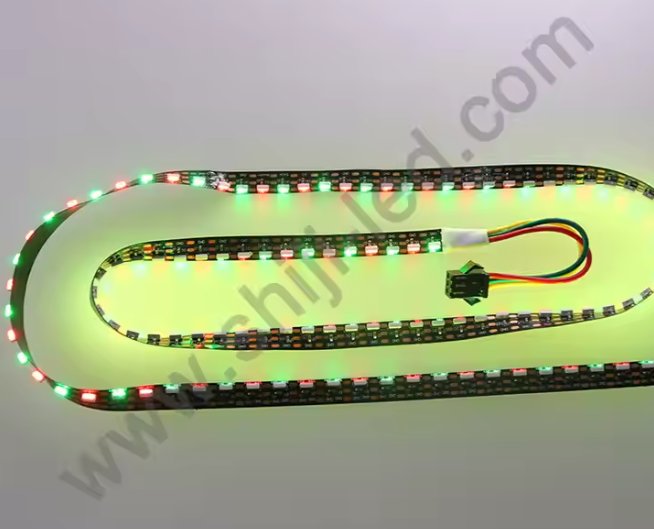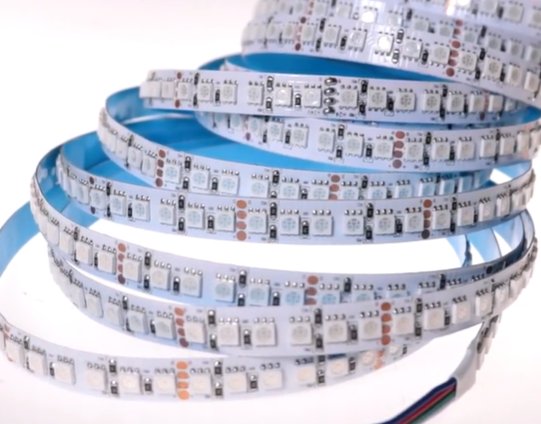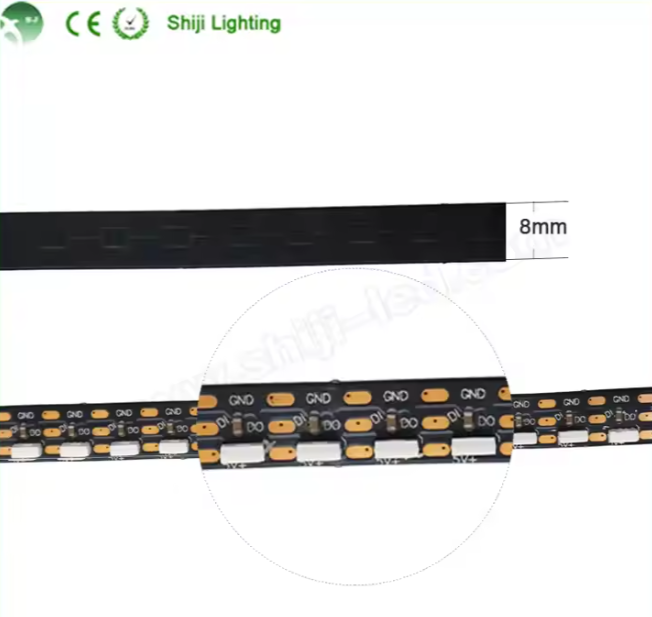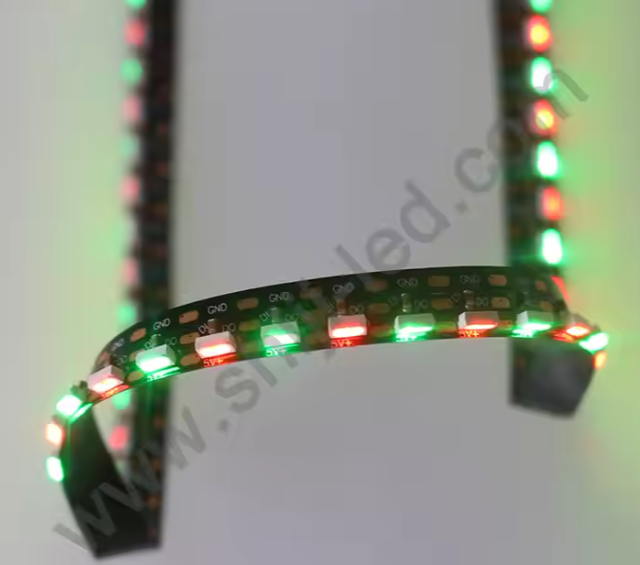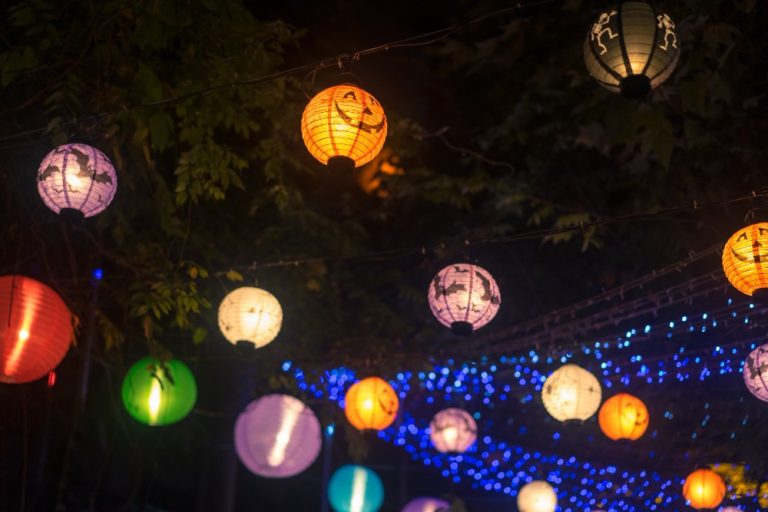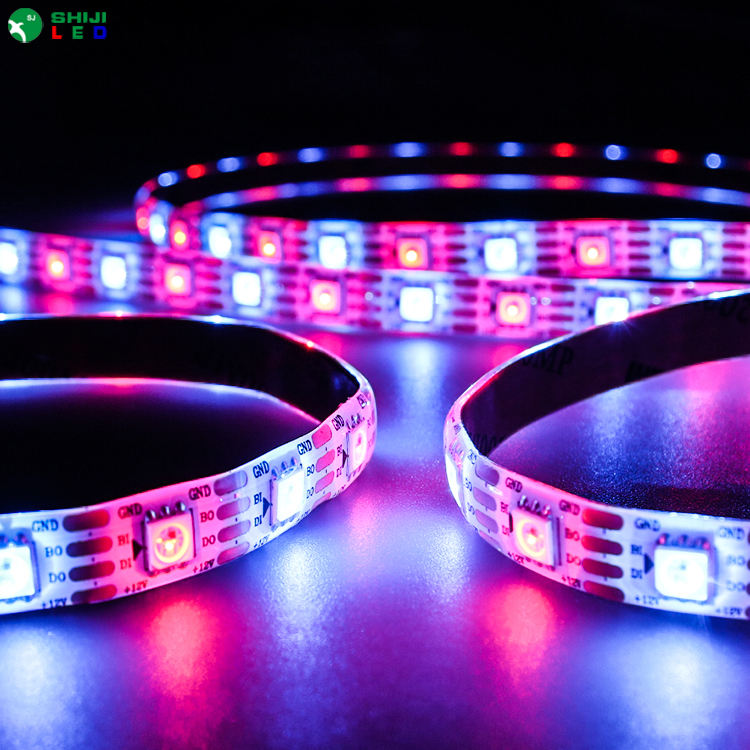Selecting the Right Programmable LED Strip for Your Project
Single Color vs. RGB LED Strips
When selecting an LED strip, it’s important to consider the kind of lighting you require. Single-color LED strips emit light in one shade, which is great for situations where you need a specific mood or purpose, such as task lighting or accentuating certain areas. On the side, RGB LED strips offer flexibility with their color-changing abilities by using red, green, and blue LEDs to create a range of colors. These are perfect for adding touches or creating lively atmospheres in settings like events and entertainment venues.
Shenzhen Shiji Lighting Co., Ltd focuses on a range of Digital LED products such as LED bars and controllable LED strips in different colors, like the 12-volt GS8209 Pixel Strip that offers various color-changing effects and guarantees smooth signal transmission even if some pixels stop working.
High Power vs. Standard Power LED Strips
When deciding between power and standard power LED strips for your projects lighting needs considerations come into play. Opting for high power strips is best suited for installations or spaces that demand strong illumination levels. For example the Waterproof 5V SK6812 SMD5050 strip features 60 LEDs, per meter delivering an intensity of 1000 lumens to provide a vivid and vibrant lighting output.
Traditional power strips use electricity and are ideal for gentle lighting requirements or compact areas. They can both be personalized to match voltage and power needs to ensure they work well with various uses.
Understanding Addressable LEDs and Communication Protocols
Individual addressable LEDs offer the ability to control each pixel independently on a strip to create animations and designs. These LEDs utilize communication standards such as WS2811, SK6812 or APA102C for efficient data transmission. For instance strips, with GS8208 ICs have data pins that keep them operational even if one pixel malfunctions guaranteeing consistency in intricate setups.
Preparing for Integration
Tools and Materials Required for Integration
To effectively set up LED strips in your project setup demands specific tools like soldering irons and wire cutters to ensure a secure connection and precise installation results are achieved smoothly. Moreover key materials such as connectors like the JST SM connectors and adhesive backing tape play a role, in providing sturdy connections and ensuring the LED strips stay securely in place for long lasting performance.
Shenzhen Shiji Lighting offers PCB materials with the choice of different waterproofing levels (IP20/IP65/IP67/IP68), guaranteeing long-lasting performance in different settings.
Power Requirements and Voltage Considerations
Programmable LED strips operate at different voltages—typically 5V, 12V, or 24V. It’s critical to match the strip’s voltage rating with the power supply to avoid damage. For instance, the SK6812 RGBW strip runs on a DC5V input, while the GS8208 strip requires a DC12V input.
Consider the voltage drop well. When strips are longer, they may not shine as brightly at the end due to resistance issues. To address this problem,m effectively distribute power at points across the strip.
Heat Dissipation and Cooling Solutions
LED lights produce heat when they are on and if they don’t get cooling their lifespan can decrease over time. To effectively dissipate the heat it is recommended to use aluminum channels or heat sinks. For example waterproof options such as the G40 Christmas Light RGB String with an IP67 rating come with casings that shield against environmental elements and help, in managing heat efficiently.
Connecting Programmable LED Strips to a Microcontroller
Choosing the Right Microcontroller for Your Project
Microcontrollers act as the central processing unit for LED setups and are commonly powered by boards like Arduino (such as Arduino Uno). Raspberry Pi devices are also favored for their adaptability and user-friendly interface when it comes to applications. Before deciding on a microcontroller model, it’s important to confirm that it is compatible with the communication protocol you intend to use, like SPI for controlling APA102 LEDs.
Shiji Lighting addressable strips work well with controllers like DMx decoders and SD card controllers for flexibility, in designing systems.
Wiring and Soldering Techniques for Reliable Connections
It’s important to have the wiring for consistent performance so make sure to use good quality wires that match the current needs with the right gauges. Make sure to solder the connections to reduce resistance and then cover them with heat shrink tubing, for insulation.
For water configurations such, as the IP68 rated Digital Programmable String Light setup make sure to seal the connectors with silicone gel or epoxy resin to keep moisture out.
Programming the LED Strip
Setting Up the Microcontroller Environment
To set up your LED strip lighting system, you need to add the necessary libraries (such as the Adafruit NeoPixel library) to your microcontroller’s programming environment (like the Arduino IDE). Specify details like pin configurations. The number of pixels in your code is before transferring it to the microcontroller for operation.
Creating Custom Lighting Effects and Animations
By using LEDs in your projects and designs¸ you have the ability to produce captivating visual displays that span from basic color transitions to complex animations that move in sync with music or special occasions¸ giving you limitless creative possibilities to explore through experimenting with various coding methods, like loops and conditional statements in order to achieve your intended results.
Shiji Lighting products are compatible with cutting edge control systems such as Madrix software to create high quality effects, for stage lighting and architectural displays.
Check out the variety of customizable LED options offered by Shenzhen Shiji Lighting Co., Ltd. suitable for a range of uses whether it’s, for home use or large commercial settings!
Addressing Common Challenges in Integration
Managing Complex Wiring Configurations
Incorporating LED strips into design elements can be quite complex due to the detailed wiring arrangements involved in the process of connecting each strip accurately for smooth functioning purposes. To streamline this process. Establishing secure and dependable connections between components easily using connectors, such as JST SM connectors, can be beneficial. Shenzhen Shiji Lighting Co., Ltd. provides an assortment of LED strips that come equipped with these connectors to ensure convenient installation and long-lasting performance. Ensuring the arrangement of wires is crucial; utilizing tools such as zip ties or adhesive clips can assist in keeping a tidy and efficient configuration.
Avoiding Issues Like Ghosting in Matrix Configurations
Ghost imaging is a concern in setups involving matrices and arises when additional LEDs are illuminated by mistake because of signal disruptions or subpar wiring conditions. To avoid this issue, effectively using top-notch components and adhering to recommended connection methods is essential. The GS8208 IC-powered strips offered by Shiji Lighting incorporate data pins that improve signal reliability and lessen the chance of ghost imaging, even in intricate layouts.
Ensuring Durability and Stability of Connections
When it comes to using LED strips in areas that face moisture or temperature changes frequently durability becomes a key concern Waterproof options like the Digital Programmable String Lights with an IP67 rating work best for outdoor settings as they are built to endure tough conditions Also securing the connections, with heat shrink tubing or silicone gel can help prevent damage over time.
Practical Applications of Programmable LED Strips in Design Components
Enhancing Aesthetic Appeal with Dynamic Lighting Effects
Programmable LED strips are commonly utilized to enhance the charm of areas with dynamic lighting effects that bring life to spaces in various ways such as creating vibrant color schemes and captivating animations that turn mundane spaces into lively atmospheres Shiji Lighting’s 12 volt GS8208 Pixel Strip offers a variety of color changing effects making it a great option, for adding decorative touches to homes retail stores and entertainment venues.
Functional Uses in Prototyping and Product Development
When working on prototypes and developing products LED strips are used for practical reasons such as giving visual cues or replicating operational scenarios For example they can show the status of systems in electronic gadgets or emphasize design elements in models The versatility and ability to customize provided by items like the SK6812 RGBW strip are essential, for engineers and designers.
Examples of Real-World Applications in Various Industries
LED strips that can be programmed serve purposes in different fields of work and creativity. For instance, in the field of architecture, they are utilized to highlight facade lighting and emphasize the features. In the entertainment sector, these strips are used for creating stage lighting effects and enhancing experiences. Additionally, in design, these versatile LED strips add a customizable touch to both the interior and exterior lighting of vehicles. Shiji Lighting specializes in providing tailored solutions for these applications, offering addressable pixel lights that are suitable for use both indoors and outdoors.
FAQ
Q: Are programmable LED strips energy-efficient?
A: Indeed! Programmable LED strips are known for their energy efficiency when compared to lighting options. They require power consumption while providing excellent brightness levels due to the utilization of cutting-edge technologies such as SMD 5050 LEDs that are incorporated in various models provided by Shenzhen Shiji Lighting Co., Ltd.
Q: How long is the warranty for programmable LED strips?
A: The length of the warranty differs based on the product model. Usually falls between one, to two years duration wise.On a related note the Waterproof Digital 30mm Pixel String Light offers a warranty spanning two years to guarantee reliability and customer contentment.
Q: What are the typical applications of programmable LED strips?
A: Programmable LED strips are devices utilized for adding decorative lighting to various settings such as buildings and cars and for testing products in different industries, like automotive design and more with their capability to produce various lighting effects that work well in homes and businesses alike.
Q: Where can I buy programmable LED strips?
A: You can buy notch customizable LED strips from well known suppliers such as Shenzhen Shiji Lighting Co., Ltd. who offer a wide selection of products like addressable pixel lights and RGB+W strips that cater, to different lighting needs.
Contact Us
If you have any questions regarding our products or need help with your project needs, feel free to contact us using our communication platforms provided by Shenzhen Shiji Lighting Co., Ltd.. Our team is committed to supporting you in realizing your goals through creative lighting solutions customized to suit your requirements.

